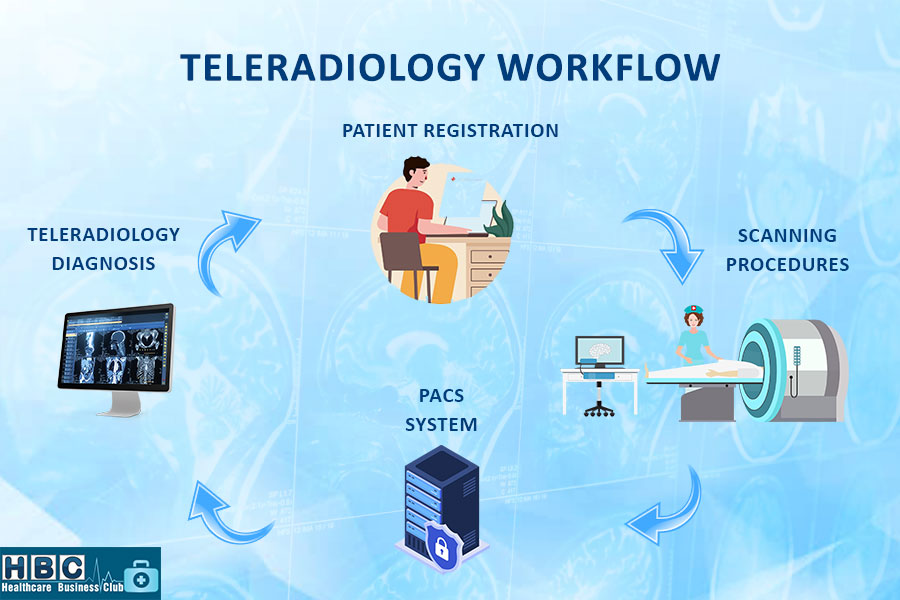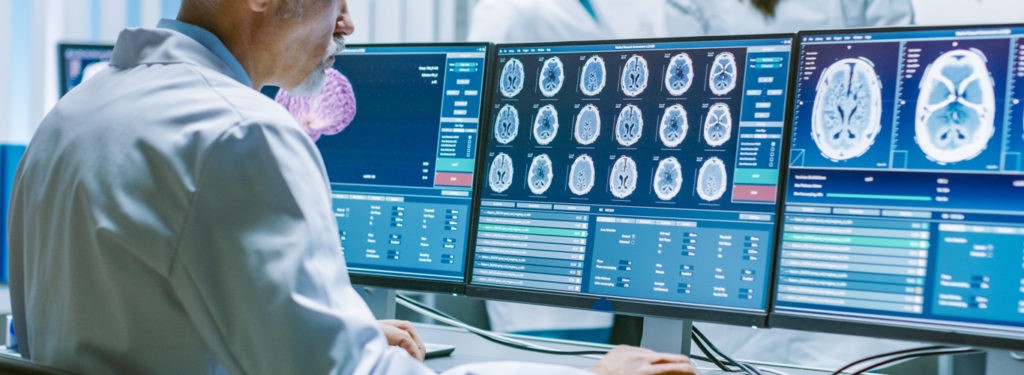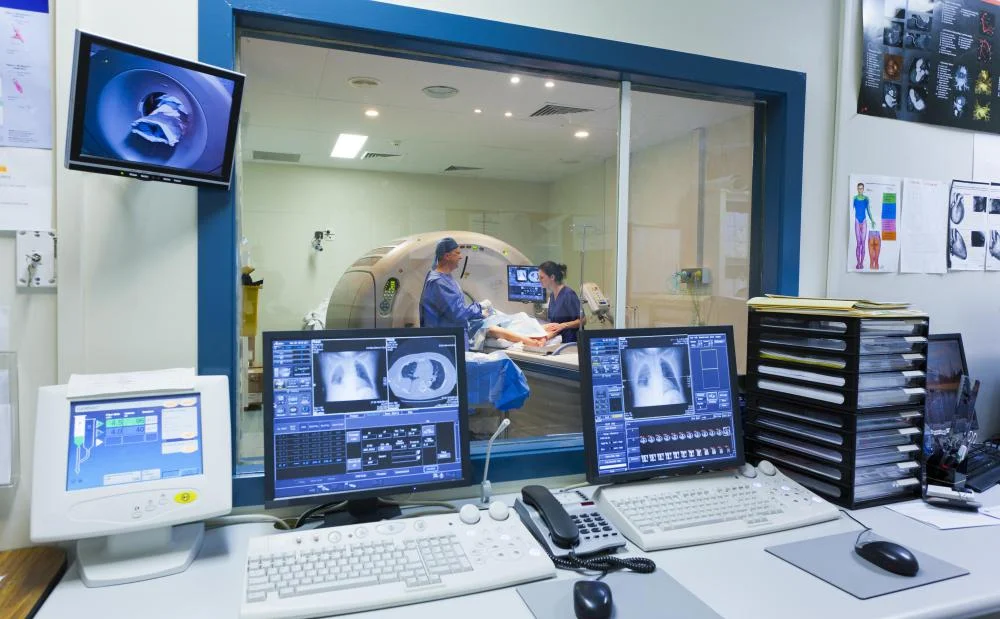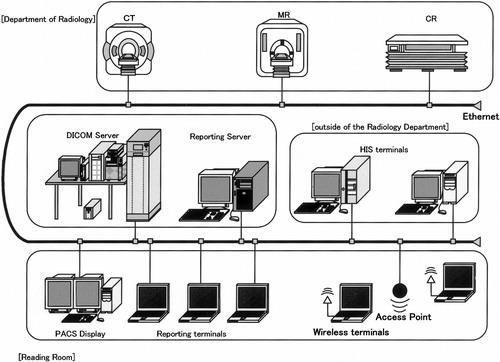In this article, I will provide a complete guide for teleradiology, the advantages of teleradiology, the infrastructure required for teleradiology services, and how to choose the best company for teleradiology services.
Like other sectors, the healthcare sector in several countries has suffered for many years from some shortcomings, the most important of which are overcrowding, poor quality of medical services, and the lack of speed in providing the necessary healthcare to patients, especially in public hospitals, in addition to the endless problems and disputes about the lack of specialized medical frameworks in different regions, and the problems of appointments in Hospitals…etc.
It was necessary to find effective solutions to these problems to advance the healthcare sector and improve the level of medical services, especially since some countries are rich in a significant number of medical professionals whose skills and expertise are recognized globally, but some other countries are still suffering from the lack of medical experts in some specialties and radiology is one of these fields.
Reforms centered around the goal of making good use of modern means of communication in health, telemedicine services appeared, adding a lot in this field, including what is known today as teleradiology.
What is Teleradiology?
It is a specialty affiliated with telemedicine services in which doctors and specialists, during their telemedicine care, rely on the radiology system, i.e. taking pictures of the internal organs in the body through medical imaging techniques such as x-rays, CT scans, magnetic resonance imaging, ultrasound….,etc) The teleradiology service also enables the transfer of medical images to a specialized radiologist located in a place far from the patient to diagnose these images and analyze the patient’s situation.
This service is also called teleradiology, which is not very different from normal radiology in functional terms, as this specialization is also based on the principle of transferring images of the affected organs Also, but from a distance, anywhere from one place to another, so that the specialist can view and analyze it to diagnose it. Usually, this task is supervised by an expert called a radiologist.

What is the Teleradiology Workflow?
Teleradiology is a kind of telemedicine service under the category of the store and forward telemedicine, in which the acquisition of medical images of the patient, then these medical images are forwarded to a specialist for diagnosis and feedback till it comes to a specific action to be done with the patient problem.

Teleradiology can happen in multiple and sequential steps which are:
1- Capturing Medical Images Through a Radiology Modality
When a patient goes to the radiology department or a private radiology center with a prescription of the required scan, the patient should be well qualified before performing this scan to get the best possible images to facilitate the work of the radiologist which is giving the right diagnosis and report.
After qualifying the patient, the radiographer will be responsible for capturing the images of the required scan and according to the standard procedures of this scan, these images can be of multiple radiology techniques like using X-rays, CT scans, MRI scans, PET-CT, Mammography or any other type of imaging modalities.
2- Storing Medical Imaging Studies on a PACS System
In the modern radiology modalities that support DICOM functions, it can generate digital medical images in DICOM format which is primarily is temporarily stored in the local workstation related to the radiology modality.
Through a network communication, the radiology modality workstation can push the patient study to a picture archiving and communication system (PACS system) to archive the medical images with patient information.
3- Forwarding Medical Imaging Studies to External Specialist for Diagnosis & Reporting

A hospital or a private radiology center can contract with a radiology consultant who is not hired full time inside the facility itself and the consultant can be from anywhere, maybe from another city or from another country.
The distant radiology consultant is notified with the new patient studies to start accessing the PACS system through the internet with special credentials to start investigating the images and writing the patient report regarding these images.
4- Radiology Department Get Patient Report
After the consultant radiologist investigates the patient study, writes, and validates the diagnosis in the form of a report on the PACS system, the report is delivered to the patient or the referring physician to take the right action.
What Are the Advantages of Teleradiology?
Teleradiology technology is based mainly on the means and techniques of communication (sending images to radiologists), and there must be a high-quality display screen, in addition to the existence of systems and programs (PACS system) specifically designed to send radiology images easily, similar to the way e-mail sends data within the attachment system.
Teleradiology Achieves Better Access to Care
Teleradiology supports doctors in caring for patients by providing them with an accurate diagnosis, optimal patient care, and treatment without being forced to be with the patient in the same place, and since most radiologists are located in urban areas only, such as the teleradiology service or what is known Teleradiology is a distinguished step and the only lifeboat for patients, especially the elderly or those who live in suburban areas far from health centers, hospitals, and medical clinics.
Teleradiology Drives Better Patient Outcome
Teleradiology helps in getting faster reports as it eliminates the boundaries of physical existence of radiologists inside the healthcare facility.
Radiology has become a critical service for healthcare delivery as a lot of decisions depend on the results of medical imaging scans to discover what’s wrong with the internal organs of the body without any physical intervention.
It’s not just getting a fast report, it’s about a quality report, so getting a report from a highly professional radiologist is very important to get the most precise diagnosis of the study, teleradiology allows this to happen so you can reach the best calibers all over the world without the need to hire them in a full time job.
Teleradiology Helps for Getting a Second Opinion From Experts
Teleradiology can also be used in the process of remote consultation, especially when the supervising doctor is in urgent need of a second professional or specialist opinion to confirm a diagnosis or treatment by transmitting x-rays, magnetic resonance imaging, etc.) to Another radiologist is located in a remote location, so that he, in turn, diagnoses her from his own perspective and gives his opinion according to his experience, skills and expertise in radiology.
With the teleradiology service, patients no longer have to travel long distances to obtain an accurate diagnosis of their images or health conditions.
Teleradiology Saves Time and Efforts
They are also forced to wait for a long period before obtaining accurate results and diagnoses for their condition, especially since all experts and radiologists who are active in the field of telemedicine, specifically medicine Teleradiologists have the absolute ability and sufficient experience that enables them to obtain sufficient information and provide the patient with the diagnoses they need quickly and in a short time.
In multiple countries, the delivery time of medical imaging reports might take up to 2 weeks due to the lack of a professional workforce in the field of radiology, which makes it harder to cover medical imaging services in all healthcare facilities at once.
Radiologists might have to travel for long distances to suburban areas to report patient studies and this makes it a slower process that takes much time, which is a big advantage of teleradiology.
Teleradiology Saves Cost for Healthcare Facilities
The coverage of radiology services in a healthcare facility using the hiring strategy costs healthcare facilities a lot money to get the high level of expertise required to give a good quality reporting service.
Also Experts are present inside the healthcare facility for a limited time, the shift of the radiologist might range from 6 to 8 hours per day, sometimes not everyday in the week.
Teleradiology solves this problem of achieving the continuum of care 24/7 and hiring a lot of radiologists which is not achievable due to limitations in the available resources.
By using teleradiology services you can get your service on demand, which is more convenient and cost-efficient for healthcare facilities as the service is highly available at lower cost.
Teleradiology Leverage Your Organization’s Competitiveness
Healthcare facilities can be more competitive and more profitable when it has a highly skilled staff with a high-quality output to achieve a better patient outcome.
Getting access to highly skilled radiology consultants is not available for a lot of healthcare facilities because of the lack of resources and the high cost to hire a highly-skilled radiologist.
With teleradiology, you can access the best expertise anywhere in the world with ease, so you can get a highly skilled staff that can leverage the quality of the radiology department.
This makes your radiology department or center more competitive with other healthcare facilities as you are providing a high-quality service level.
Teleradiology also increases the internal competition among radiologists to be more skilled and highly qualified to serve in multiple areas or even countries.
Read Also
Infrastructure Required for Teleradiology
To get a teleradiology service you should consider the required infrastructure to get the service seamlessly and achieve a smooth workflow that guarantees the availability of the service without disruption, you should have the following infrasturcure if you want to get a teleradiology service
1- DICOM Enabled Radiology Modalities

To get a teleradiology service, your radiology department should be equipped with DICOM-enabled radiology Modalities to be able to get digital radiology images so it can be transferred through modern communication technology means and retain the image quality as well.
Some old radiology equipment doesn’t support the DICOM features so you cannot work with teleradiology services with these old modalities, so please make sure that you at least have the minimum requirements to get the service.
2- Internal Network

The internal LAN/WAN network is essential to link all radiology modalities, it’s related workstations, PACS system, and Teleradiology solution to one network which is essential for medical images exchange across the whole network.
Please make sure that you are using networking hardware of good quality and well configured to guarantee the high availability of the network with minimal downtimes.
Due to the large size of images of some modalities like CT and MRI, also studies might have a large number of images that can reach up to more than 1000 images, you should use a high-speed network infrastructure to transfer studies at a good speed that takes less time in the transfer.
you can use 10/100/1000 ethernet, switches, and CAT 6 cables to guarantee a good speed of image transfer at a good time, the transfer speed can reach up to 1 gigabyte per second if the whole path is intact and has a unified technology.
3- PACS System

In a previous article we have talked about the PACS system and its importance to the radiology department, it’s considered one of the essential components of any teleradiology solution.
PACS system is mainly used to receive the digital images from radiology modalities associated with patient information to archive in the database.
Radiologists can access PACS system to check and diagnose the images and then write a report for the study.
4- Internet Connectivity

Internet connectivity is essential to be able to upload the studies and images to a cloud server, or enable the radiologist to access the studies from your local server.
You should provide internet connectivity of a good speed, especially with uploading speed, this will help in uploading studies faster and consequently get a faster response without any delay.
An average speed of 1 MBps is required to get a reasonable image transfer speed and the true uploading speed is varying from a facility to another because of the connectivity infrastructure in your city or town.
Teleradiology Services Cost and Prices
the cost of teleradiology services is a mix of fixed cost and Variable cost, which is illustrated in the below section.
Teleradiology Services Fixed Cost
The fixed cost of teleradiology services is represented in the following items:
- Hardware cost (Computers, Servers, Network equipment,….etc)
- Connectivity cost including internet connectivity
Teleradiology Services Variable Cost
The variable cost of teleradiology services is represented in the reporting services itself, so you may pay for reports at different rates according to the following factors:
1- The Type of the Medical Imaging Study
Type of the medical imaging study is the first and main variable that defines the price of the service, most teleradiology companies puts different pricing that depends on the type of the study itself.
2- The Level of Radiologist Expertise
The pricing of teleradiology services also depends on the level of expertise of the radiologist who will report the study.
A junior radiologist charges less than a consultant radiologist, also it depends on the type of the study itself, a radiologist who reports an MRI scan charges higher than another one who reports a CT scan or an X-ray scan.
So when you deal with a teleradiology company you should ask for the resumes of the radiologists who will perform the service to check if their prices is relevant or not according to the expertise of radiologists.
3- The Delivery time of Patient Reports
Some companies which present teleradiology services depend on the delivery time of patient reports, so giving patient reports on spot costs higher than getting a patient report within 12 hours or even a longer time that might take up to 48 hours.
So make sure while choosing a teleradiology company to check their service level and its pricing scheme to get the service you need in the required time and achieve cost efficiency.
The Conclusion
Teleradiology has become one of the trending services in the radiology field to compensate the lack of a radiologists workforce, especially in suburban and rural areas.
Teleradiology mainly depends on the latest technology in medical imaging and communication means, to enable the digital archiving of medical images and the transmission of these images to any other place in the world with a high speed.
When your healthcare facility struggles with coverage of medical images reports, teleradiology is your optimum solution to get a timely service in a cost-efficient manner.






